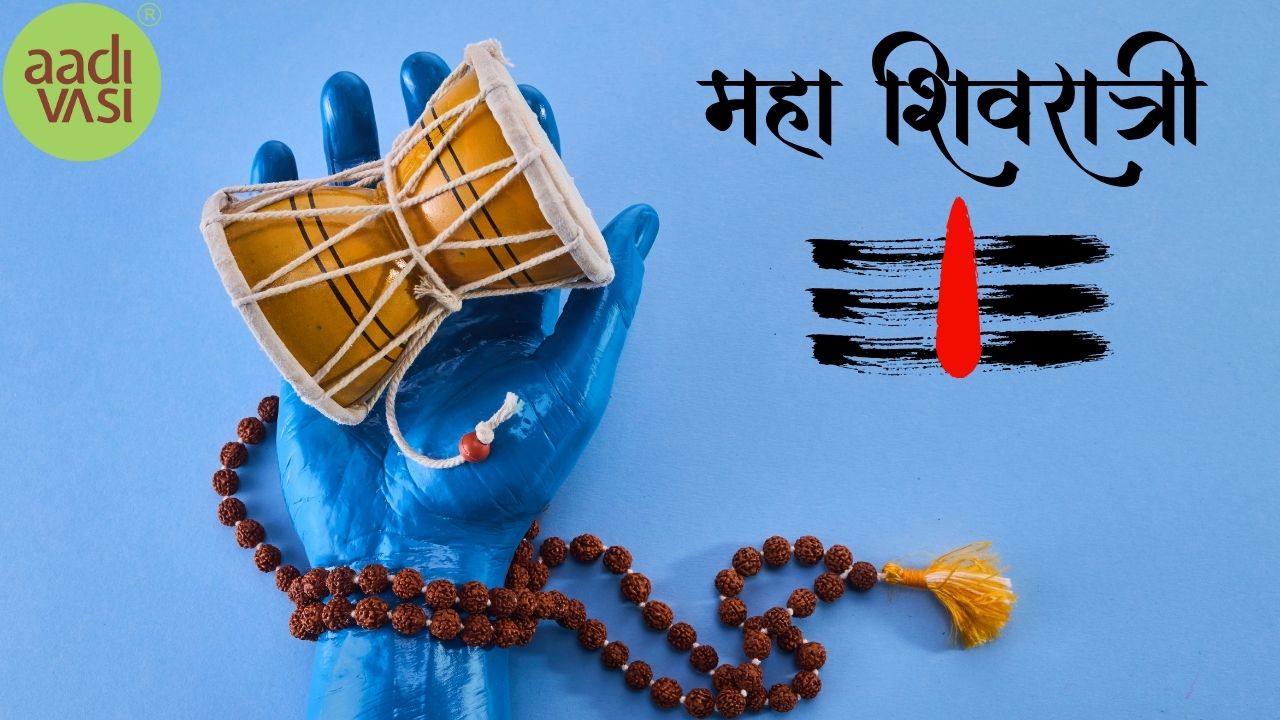Aadivasi Tribes and Their Unique Maha Shivratri Celebrations Across India

Aadivasi Tribes and Their Unique Maha Shivratri Celebrations Across India
Maha Shivratri—the festival of quiet devotion and moonlit prayers—finds itself celebrated in many forms across India. But none so captivating as the Aadivasi Maha Shivratri, where faith dances through the forests, untouched by the weight of modernity. These tribal Shivratri celebrations are not just rituals but an inheritance, a thread binding the past with the present, whispered from ancestor to ancestor.
A Sacred Union of Nature and Worship
Among India’s indigenous tribes, Maha Shivratri is not a festival bound by the confines of temple walls. It belongs to the rivers, the mountains, and the vast, starry sky. The Bhils, Gonds, Santhals, and Oraons perform Shivratri tribal rituals under the watchful gaze of ancient trees, where fires burn all night and the air vibrates with drum beats and voices raised in reverence. These Aadivasi festival traditions don’t require grandeur—they thrive in simplicity, in the company of the forest and its spirits.
The Mysticism of Tribal Worship
For the Adivasi, Lord Shiva is a guardian of wilderness, a deity who walks barefoot through dense jungles, his presence felt in the rustling leaves. Their sacred tribal worship includes offerings gathered from the land—wildflowers, sacred herbs, and earthen pots of rice beer. There are no golden idols here, only hand-carved figures from wood and clay, shaped with devotion and whispered prayers. These indigenous culture festivities are not for the hurried or the restless; they are a slow unraveling of faith, a quiet surrender to the spirit of the land.
The Wild, Unscripted Celebrations
Wander through Madhya Pradesh, Odisha, or Jharkhand, and you might stumble upon a celebration unlike any other. In Bastar, the tribal Lord Shiva comes alive through dramatic reenactments—masked dancers become celestial beings, narrating tales older than time. The rituals, known as 'Nachai', are an explosion of movement and mysticism, a dance between devotion and storytelling.
When Devotion Meets Dance and Music
Music and dance are inseparable from Aadivasi spiritual practices. Dhols and madals thump rhythmically through the night, shehnais wail into the darkness, and bodies sway in patterns passed down through generations. This is devotion in its most primal form—where feet beat against the earth and voices rise towards the heavens, seeking neither blessings nor miracles, only a connection to something far greater than themselves.
Offerings Beyond Milk and Honey
While temples elsewhere see libations of milk and honey, Adivasi rituals favor something more raw. Unique Shivratri rituals include Mahua liquor poured over Shivlings, a symbol of purity rather than indulgence. The Baiga tribes of Chhattisgarh believe that Shiva, the ascetic wanderer, is best honored with the gifts of the land—no gold, no incense, just the earth’s own bounty.
A Festival That Transcends Boundaries
From the shadowed forests of Chhattisgarh to the misty hills of Meghalaya, India’s tribal festivals offer a glimpse into a world where faith is unshackled from the rigid structures of organized religion. Their ancient tribal worship is a testament to a time when gods walked among trees and rivers carried prayers downstream.
Why These Celebrations Matter Today
In an age where cities grow taller and traditions grow fainter, these Adivasi devotion rituals stand as a quiet rebellion—a reminder that spirituality is not measured in temple queues or grand processions, but in the hush of a forest, in the flicker of a flame, in the steady heartbeat of a drum. The indigenous Maha Shivratri celebrations remain untouched by modernity, carrying within them the essence of an older, wilder world.
Interestingly, the Adivasi way of life and their handcrafted traditions are gaining recognition beyond religious celebrations. Platforms like Aadivasi.org are helping bring these indigenous crafts and cultural artifacts to a wider audience, promoting ethical and meaningful gifting that aligns with the spirit of sustainability and heritage.
So, this Maha Shivratri, if you long for something beyond the neon-lit temples and the rush of city streets, step into the quiet of the forest, where Shivratri sacred offerings are made not with wealth, but with heart, soul, and the gentle whisper of the wind through ancient trees.

